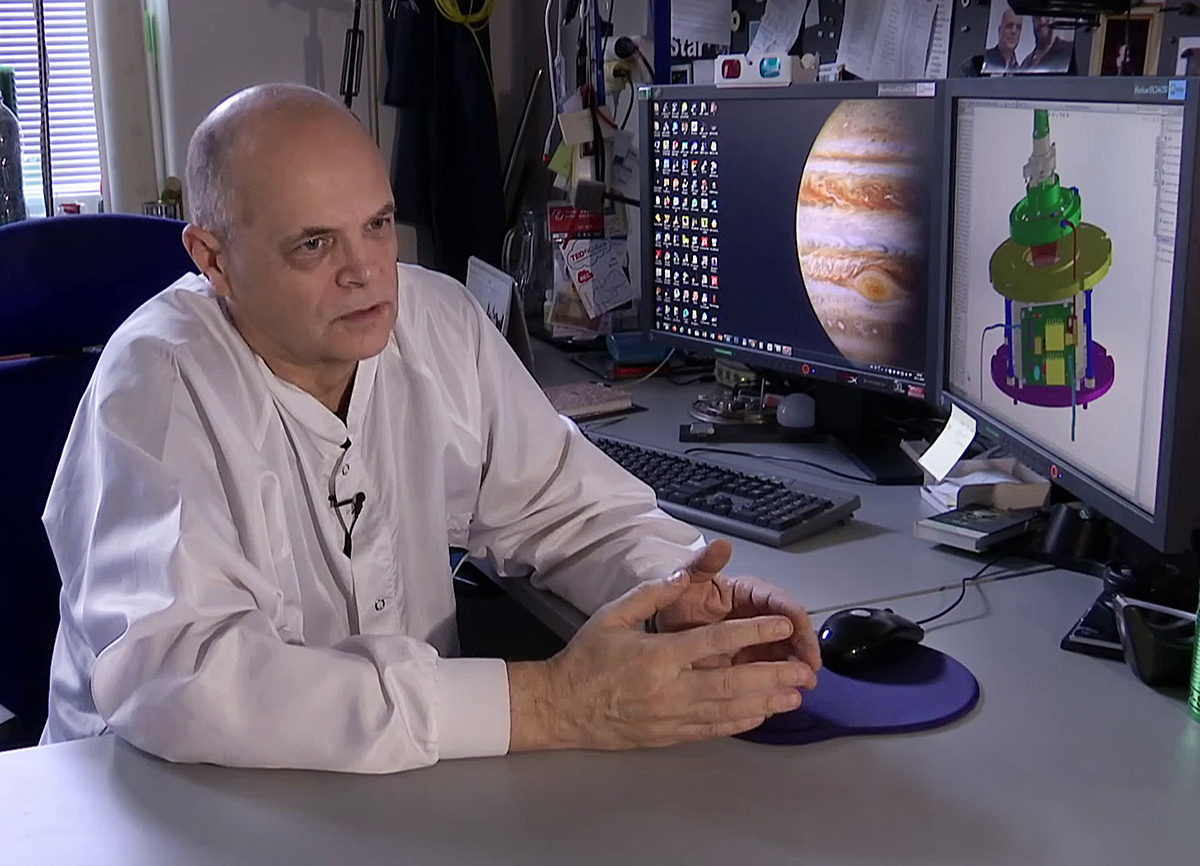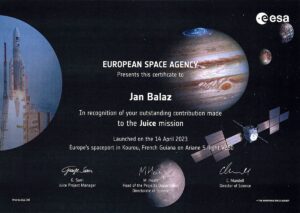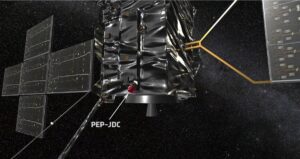ESA recognition for Ján Baláž

The European Space Agency (ESA) awarded Ján Baláž from the Institute of Experimental Physics SAS for his exceptional contribution to the JUICE mission. The JUICE (JUPiter ICy moons Explorer) probe worth 1.6 billion euros was launched on April 14, 2023 from the Kourou Cosmodrome to an eight-year long journey to Jupiter. During the close flybys, it will study its moons Europa, Ganymede and Kallisto in detail. At the end of the mission, the probe will be captured in an orbit around the moon Ganymede, making it the first time in history that a human-made object orbits the moon of another planet.
The JUICE probe carries 11 top scientific instruments on board, including the PEP (Particle Environment Package) instrument, to the construction of which the team led by Ján Baláž made a significant contribution. The instrument will study the particle environment of Jupiter, with which the “Galilean” moons effectively interact, since they are located inside the intense Van Allen radiation belts of the giant planet. Ganymede’s interactions are even more complex, as this moon also has its own magnetic field.
Part of the scientific complex PEP is the anti-coincidence detector ACM, developed and constructed at the Institute of Experimental Physics SAS in Košice. Its task is to register the penetration of high-energy particles through the shielding cover of the PEP apparatus into its detection system. Such particles cannot be sufficiently shaded due to mass and geometric limits.
“Without the ACM detector, the PEP-JDC sensor would not be able to reliably distinguish low-energy plasma particles from the disturbing effects of penetrating high-energy particles,” explains Ján Baláž, who was very pleased with the ESA recognition.
“I greatly appreciate this award. They actually surprised me by giving me the certificate now, since the JUICE probe is still eight years of interplanetary flight and a cumulative distance of 6 billion kilometers away from its destination. I received a similar certificate in the past for my contribution to the Rosetta mission only after ten years of flight and reaching its goal – 67P/Churyumov-Gerasimenko comet,” said the designer of the ACM detector.
A detailed 3D model of the JUICE probe is available on the ESA website and via the Where is JUICE now? website it is possible to track not only its current position, but also virtually simulate its entire flight through the solar system from its launch on April 14, 2023 to reaching Jupiter on July 18, 2031.


 Contact
Contact Intranet
Intranet SK
SK






